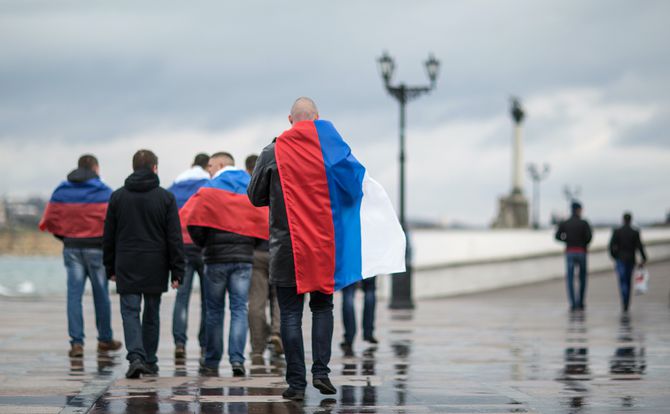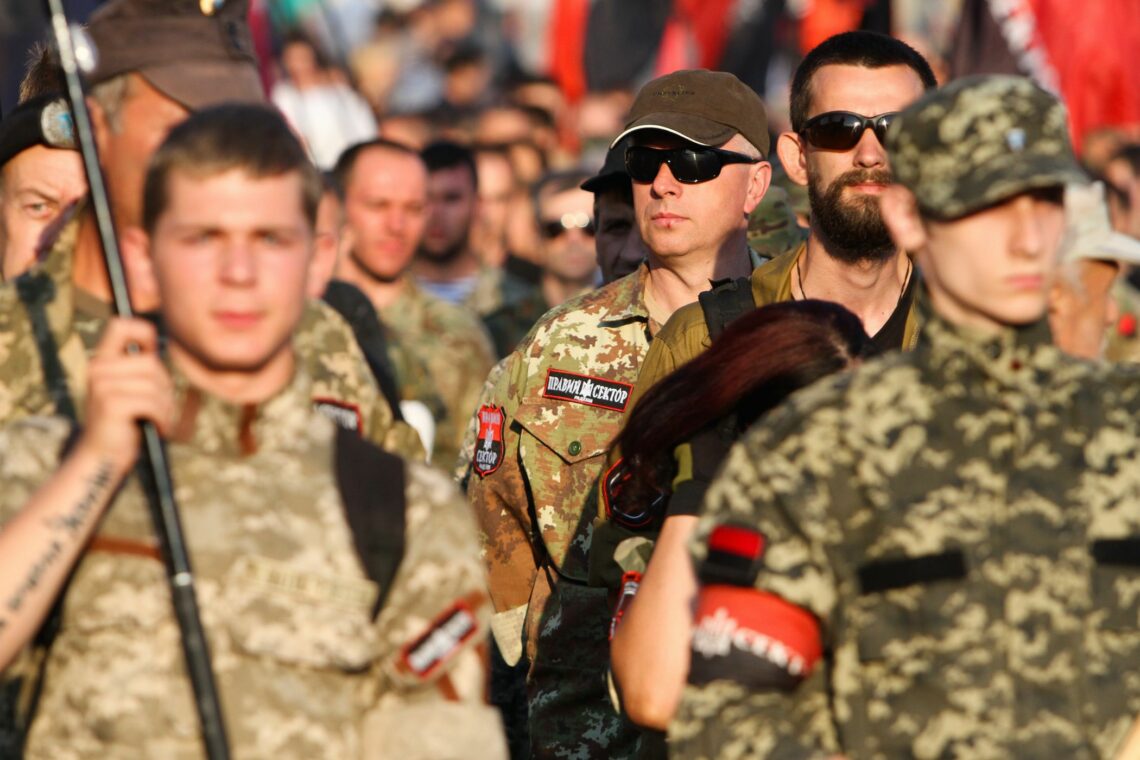Unraveling the Crimean knot
Any sensible person can see that the status quo in Crimea is unacceptable, while restoration of the status quo ante is impossible. That means the scope of possibilities is very narrow. When looking for the least bad solution for the conflict between Russia, Ukraine, and the West, perhaps two wrongs can make a right.

In a nutshell
- Russia’s decision to annex Crimea in 2014 was a mistake, but it cannot be undone
- With support for independence at 30 percent or less, another referendum is pointless
- Better options would be a Gibraltar-like truce or a package deal including Donbas
Two years ago, I argued in GIS that the only way to resolve the Crimean problem was to respect the will of its people. To any sensible person, it should be obvious that preserving the status quo on the peninsula is unacceptable, while restoring the status quo ante is impossible.
This leaves a very narrow range of possibilities.
Any optimal solution was precluded by Russia’s irreversible decision to annex Crimea. One of the mysteries of the events of five years ago was why Russia did not stop at the declaration of Crimean independence on March 16, 2014, but instead took the next step and incorporated it into the Russian Federation two days later. Recognition and military protection of an independent Crimea would have given Russia virtually the same benefits it has now, while the costs – diplomatic and financial – would have been orders of magnitude less severe.
No going back
That ship has sailed, however. One sometimes hears a deceptively simple suggestion of doing it over by holding another referendum – this time honest and free, under international supervision. But that is no solution at all. For one thing, the legal grounds for repeating such a plebiscite are completely unclear. For another, a second referendum would not change the situation one bit.
I arrived at this conclusion after conversations with many friends and colleagues with personal links to Crimea. Some were born there, some live there, and some have done business there under Ukrainian and Russian rule. I asked them to cast their thoughts back to March 2014 and imagine an honest referendum – with no outside interference, no voter intimidation, no “little green men,” and with a full menu of options. The latter would include remaining under Ukraine’s sovereignty, becoming part of Russia, full independence, joint Ukrainian-Russian administration, or a transition government under international control (for example, a mandate administered by the United Nations, the European Union, the Organization for Security and Co-operation in Europe, or something else).
Ukrainian sovereignty or a supervised transition were never taken seriously.
When I asked how the voting would go, the replies were very similar. Perhaps 30 percent supported independence, and about 60 percent supported full integration into Russia. This is a far cry from the official (and internationally unrecognized) result of 96 percent for annexation, but it would still be a clear majority for the same result, and closely matches almost every public opinion poll conducted in Crimea in 2014. No other options, whether Ukrainian sovereignty or an internationally supervised transition, were ever taken seriously into account.
Power of panic
Why this choice? The main reason was a horrible, panicky fear of a Ukrainian invasion and rule of terror that swept through the Russian-speaking population of Crimea in February and March of 2014. The fear was quite irrational. From the purely military point of view, it would have been impossible for Ukraine to send a punitive expedition through Perekop, the narrow isthmus that connects the peninsula to the mainland. The authorities in Kiev lacked the troops or the logistical capacity to mount such a campaign.
The rumors that swept through Crimea in late February that right-wing Ukrainian nationalists were planning to send “friendship trains” to Crimea were also overblown. At best, the Right Sector could have dispatched a couple of thousand militants to subdue two million people. The threat posed by a few inexperienced, poorly armed paramilitaries would have amounted to a bunch of Brownshirts (SA) at best, not Waffen SS legions. They would have been easily dealt with by the much more numerous Crimean “self-defense” forces that sprang up in late February 2014, to say nothing of Russian regular army units already stationed or quietly moving into the peninsula.
At that moment, most Crimeans saw Russia as their only protector.
Nevertheless, the panic – no matter how unjustified – was quite real. At that moment in Crimea, Russia was perceived as the only protector from the specter of a “fascist Ukraine” that had reared its head on Kiev’s Maidan. Even today, people in Crimea insist they were right to think this way, even with full awareness of the economic privations and inconveniences of the subsequent Russian regime. Many even confess to being nostalgic about the last years of President Viktor Yanukovych’s rule, when the Ukrainian state was weakened by anomie and corruption and nobody was talking about forced Ukrainization. In the minds of Russian-speaking Crimeans, this was the closest thing to freedom they had ever experienced. But even more than freedom, they prized security.
Under such conditions, the possibility of Crimean independence (even as a fig leaf for Moscow’s remote control) was only ever on the table as long as there was no offer to join the Russian Federation. Once that option was dangled, the local population rushed to grab it. Turning back the clock and saying “no harm, no foul” is now unthinkable.
Gibraltar analogy
That leaves no good solution – and no quick one, either. As I wrote two years ago, “the leadership elites that contributed to the problem [should be] replaced or radically renewed. That would presumably involve major structural, institutional, ideological and regime-related changes in Russia, Ukraine, Europe and the U.S. The precise nature of these changes will vary in each case, but the players and the game itself will have to be redefined from scratch.”
This process has already begun, but it will be a long one. All that is possible now is to consider what conditions, sometime in the future, would allow at least a bad decision to be made. With that in mind, there is one promising line of thought.
The world is full of contested areas with complex histories – Puerto Rico, Taiwan, Hong Kong, the Western Sahara, Kashmir, Alsace-Lorraine, Northern Cyprus and the Kuril Islands, to name a few. In many places of disputed sovereignty, protectorates, mandates, dominions or commonwealth realms were set up. This principle has also been applied to strategic outposts like Guantanamo or Gibraltar.

Gibraltar is in fact a good analogy for Crimea. The positions of Spain and the United Kingdom over the sliver of land jutting into the Strait of Gilbraltar are irreconcilable. However, after many years of tensions, this issue has been completely removed from the agenda. There is no animosity between the British and the Spanish peoples or their governments; bilateral cooperation continues unblemished; both countries are united by numerous bonds, including common membership in NATO and (for the time being) the European Union. Hundreds of thousands of British subjects retire happily to sunny Spain; they take first place in numbers of tourists and foreign buyers of Spanish real estate. Russia and Ukraine could both learn from this example.
Another reason the analogy holds is the strategic and military significance of the two peninsulas. Given Gibraltar’s position as a chokepoint between the Atlantic and the Mediterranean, it is impossible to imagine the British military willingly giving it up. The same can be said about Crimea’s position overlooking the Black Sea. The Russian military operates not just the vital naval base in Sevastopol but other facilities scattered all over the peninsula, ranging from air bases and radar stations to residential quarters and health resorts.
Any solution involving a demilitarized Crimea is absolutely unrealistic.
Crimea is the Russian army’s trophy, one that it would be reluctant to give up even if it were forced to abandon its traditional political neutrality. This makes any solution involving a demilitarized Crimea absolutely unrealistic. Given the peninsula’s strategic location, there will always be a military presence there – be it Russian, Ukrainian, Turkish or NATO-affiliated. Right now, Russia is in possession, and it is not clear how that can be changed. What is certain is that the costs of ejecting Russia from this bastion would be incalculable, for all parties involved.
Eyes on the prize
Isolating and neutralizing the problem of Gibraltar was possible because the UK and Spain had the common objective of participation in European and transatlantic integration. This is the sine qua non: peace arrives when it becomes more beneficial than war.
Is there an equally valuable prize for Russia and Ukraine? It is hard to say. Definitely not joining the EU – the present-day situation of Russia and Ukraine, along with the EU’s own internal problems, would preclude that. The best opportunity for such a convergence was lost about 15 years ago and will not reappear for some time.
The same, regrettably, is true of NATO, which in some ways would have been the easier goal (after all, Turkey is a NATO member). The only catalyst for such a scenario would be an external disruption, simultaneously affecting the European Union, the U.S., Russia and Ukraine, on a scale so catastrophic (think Martian invasion) that it would be best not to imagine at all. Equally fantastical would be the creation of a new integration framework combining, for instance, the European and Eurasian Economic Unions. Why would such a hybrid be attractive to anyone?
Russia, Ukraine and the West all derive benefits from the continuing confrontation.
For the time being, Russia, Ukraine, and the West are all deriving benefits from the continuing confrontation over Crimea. The game they are playing is not zero-sum but positive-sum. To settle such a conflict, someone has to be seriously invested in peace. Financially and diplomatically, the required scale of effort is comparable to the peace processes in the Middle East, Iran, or Korea. All of these negotiations have been ongoing for a decade or more, and all are far from resolution.
Crimea could be an even more hopeless case. Yet one possible way out offers a glimmer of hope, though it would satisfy nobody.
Donbas swap
Two wrongs cannot be righted separately. Taken together, however, they can sometimes neutralize each other. Here, we refer to Crimea and the separatist-controlled regions of Donetsk and Luhansk.
There is a vast difference between the two regions. Unlike the Donetsk Basin, or Donbas, Ukraine never treated Crimea as something truly its own. Russia’s attitude was exactly the opposite. Having taken Crimea, it will never give it back. Moscow has no desire, however, to hang on to Donetsk and Luhansk. For Russia, these territories have become a white elephant, or to use the more appropriate Russian locution, a suitcase without a handle – hard to carry but a pity to dump.
For the Ukrainian authorities, reasserting control in the east would be a major success.
The only reason Russia maintains a military presence in Donbas and continues to sponsor the separatists is a real fear that as soon it pulls out and Ukraine reestablishes itself, there will be a bloodbath that will reflect poorly on the Russian authorities and personally on President Vladimir Putin. The presence of Ukrainian volunteer units on the front lines makes such retribution even more likely. But on the whole, sloughing off the burden of supporting the separatists would cause a sigh of relief in the Kremlin. It would mean one less problem to sour its relations with the West.
For the Ukrainian authorities, reasserting control in the east would be a major political success and a powerful step toward peace. President Volodymyr Zelenskiy would win the prize that eluded Petro Poroshenko, going down in his country’s history as a victor and a peacemaker, regardless of what happens in Crimea. Finally, the Russian-speaking population of the southeastern territories, unlike Crimea, has no insurmountable prejudices against Ukraine and all things Ukrainian. The voices of ordinary people (not the “dogs of war”) all clamor for the same thing: “Do whatever you want, just stop killing us.” With time, this window of opportunity may close. For the time being, it remains open.
Bargaining chips
The conditions for this swap are obvious enough. Firstly, there would be a withdrawal from southeastern Ukraine of all military forces, armed groups and agents who are really under Moscow’s control. Some local volunteers and mercenaries might remain, but these holdouts would no longer pose a political or military problem, but would simply be a challenge for law enforcement.
Secondly, Ukraine would reassume control of its eastern frontier. Yes, Russian troops would remain within easy striking distance of Ukrainian territory, but at least they would be on the other side of the border. Security could be buttressed by inserting neutral peacekeepers with very wide prerogatives. UN Blue Helmets would be best, because their military personnel would be drawn from countries that have nothing to do with the region, such as Brazil or India.
The Western end of the deal would be to lift some sanctions and renew a real dialogue.
Thirdly, Ukraine would pledge full compliance with the Minsk Agreement, including an amnesty for combatants and special statutes for these areas. There will be serious resistance in Kiev to this demand. But the more acute the phobia of Ukraine’s political class to federalization, the more it seems there will be no other way to preserve the political unity of this extremely diverse country.
Fourthly, the Western end of the deal would be to lift some economic sanctions on Russia and renew a real dialogue on all other aspects of East-West relations, especially regarding strategic weapons. Ukraine would receive substantial aid to rebuild conflict-ravaged areas. For lack of any alternative, this financial support would come primarily from the EU, the U.S. and Western multilaterals.
Unblocking relations
The last and most important element of the deal would be for both sides to agree that their stances on Crimea are incompatible. Recognizing that any quick resolution is impossible, all parties to the dispute would simply agree to set their differences aside and concentrate on other aspects of their relationship. The barren argument over recognizing or not recognizing Crimea as Russian would simply be scrapped, the sooner the better. Both the extreme pro-Russian position recently voiced by former German Chancellor Gerhard Schroeder and the strong opposition stance voiced by most other European leaders are equally counterproductive. Setting the matter aside would allow both sides to start unblocking their relationship without betraying their views, losing face or sacrificing their interests.
The arrangement that succeeded in Transnistria may well work in Donbas.
The potential for such an agreement is the context in which one should view President Putin’s recent decision to offer Russian citizenship residents of the self-proclaimed Donetsk and Luhansk republics. Certainly, this is interference in Ukraine’s internal affairs. However, there are many instances all over the world where a country’s domestic troubles provoke an international response. Israel, Afghanistan, Venezuela, and even Russia and the U.S. offer prominent examples.
The wholesale offer of Russian passports could help prevent a potential massacre once Russian forces withdraw from southeastern Ukraine. A similar arrangement succeeded in Transnistria, where Russian citizens now comprise about half of the population. This fact is one of the main safety mechanisms against resuming the conflict between this autonomous territory and Moldova. Transnistria was never annexed by Russia, even though 97 percent of the population voted for that option in the 2006 referendum. What succeeded in Transnistria may well work in Donbas. It also gives the inhabitants a free choice to stay or leave.
That is a recipe for a bad peace, which at least is better than a good war. It would still cost a lot of money. Ukraine would have to live with the irrevocable loss of Crimea, just as Russia would have to live with the consequences of its unlawful acquisition. That would be unjust, of course, but there are no magic spells to undo irreversible acts. The Crimean toothpaste cannot be pushed back into the tube.






